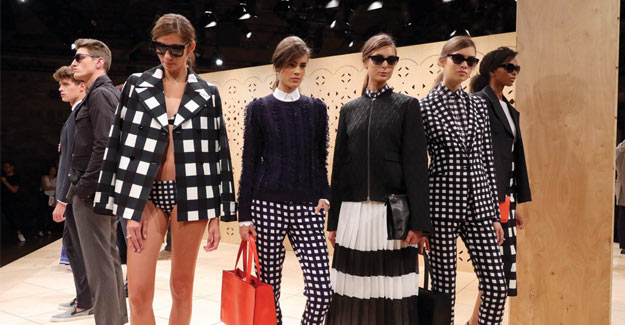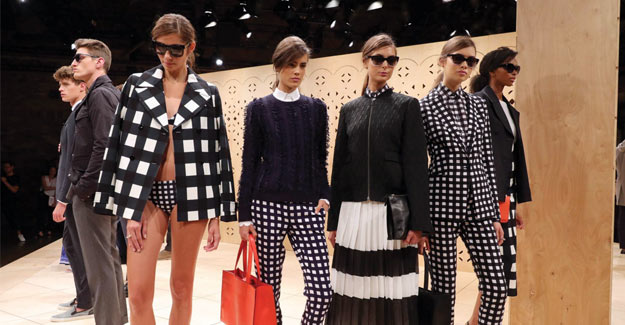
An Identity Crisis Is Killing Women's Workwear
When Banana Republic hired a star designer in 2014, it was greeted with a wave of optimism - no longer would the label be the boring, ubiquitous merchant of last-minute suits for job interviews.
Marissa Webb had been J.Crew's head of womenswear and had a successful, trendy fashion line of her own and Banana Republic had been plodding along, trying to recover after the recession. Its executives were excited to reinvigorate the label with freshness and audacity.
Webb delivered on that promise-but just 18 months later, she was gone. Banana Republic's clothes, for years too dull, were now too bold, and the working woman rejected them.
Now, with sales still ailing, Banana Republic is trying out its third strategy in as many years, as executives puzzle over what the American working woman wants. The company isn't alone in that struggle. Workwear for the American woman is experiencing an identity crisis. As workplace attire becomes more casual and women demand freshness - the kind found at fast-fashion stores like Zara and H&M - fashion's office staples are stuck in a rut.
Banana Republic has posted six straight quarters of negative comparative store sales, and its annual revenue in the US has dipped 6.5% since 2014. Ann Taylor, another longtime destination for career women, has struggled to keep them interested as they ditch suits for more comfy clothes. And in July, LVMH Moet Hennessey Louis Vuitton SE bailed on its money-losing DKNY brand, a storied label that defined women's professional attire in the '90s, and sold it for US$ 650 million.
These days, in many workplaces, women aren't constrained to their uniforms of the olden days-pencil skirts and blazers, sheath dresses, tailored pants, or business suits. Sure, they still wear them, but they're also layering yoga pants under stretchy dresses, or just buying whatever's on-trend from the closest fast-fashion store that's adapted runway styles for everyday wear.
"There's been a real shift away from wearing work apparel to more casual things," said Bridget Weishaar, an analyst at Morningstar Inc. "The space as a whole is under pressure." That has left executives scrambling. Ann Taylor gave Austyn Zung, designer of its trendier brands Loft and Lou & Grey, creative direction of the flagship label, too, and he has added whimsical patterns and color to traditional silhouettes. And before DKNY was sold, it brought on red-hot duo Maxwell Osborne and Dao-Yi Chow of the label Public School to bring brashness to everyday essentials. Neither Ann Taylor nor DKNY responded to requests for comment.
Art Peck, chief executive of Banana Republic's parent company Gap Inc., said late last year that the performance of the workwear label after Webb's revamp was his biggest disappointment. He thought the styles had hit the "sweet spot" of what Banana Republic should be, but customers refused to bite. "I was really hoping that we would get more traction with the new design direction," he said on a conference call with analysts. Banana Republic declined to provide additional comment.
Again, a new strategy was needed
"They had to backtrack," said Weishaar. "You can't go too far away from your core customer and your brand image." Now, after a year of aggressive discounting in an effort to draw shoppers back into stores, Banana Republic is trying to wean them off of constant sales.
At Banana Republic's spring presentation in a former Manhattan ballet venue during fashion week this month, the label showed off its latest looks on models-constructed blazers and slacks, paisley-print pants, and asymmetrically striped dresses. After Webb, the brand's designers are looking for a middle ground, trying to infuse clothes whose very point is to be dull with a little excitement.
Just not too much of it.

Textile Excellence
If you wish to Subscribe to Textile Excellence Print Edition, kindly fill in the below form and we shall get back to you with details.








